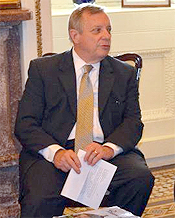 Durbin |
Durbin says everyone has the right of free speech but those who work for established media are in a special class and need special protections.
He wants such a definition because he is pushing passage of a federal “shield law” that would allow bona fide journalists to hide their sources.
Opponents of Durbin include law professor Glenn Reynolds of the University of Tennessee who says that if shield laws are passed they should protect everyone because just about everyone is a journalist these days.
Journalism is "an activity, not a profession," says Reynolds, and we agree. Neither is PR a profession. It is an occupation. Professions such as the law and medicine have state-supervised licensing and procedures to expel abusers. No such oversight exists in journalism or PR.
Reynolds notes that "a lot of big scoops have come from people other than the institutional press—from James O'Keefe's exposes of ACORN and voter fraud to Edward Snowden’s release of NSA secrets…"
An extensive discussion of "real" vs. "fake" journalism was conducted by Rebecca Greenfield on The Atlantic Wire recently.
What Is a Real Journalist?
Anyone can have an opinion or find out something no one else knows and publish these on their own websites.
Anyone can play the piano or golf but to do these well takes a lot of time.
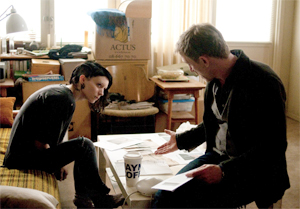 'Girl withe Dragon Tattoo' |
They devoted endless hours to research, poring over old records, looking for people who would talk to them when almost no one would, and searching for clues in every nook and cranny. They were trying to solve the 40-year-old mystery of a missing person.
Insatiable curiosity, boundless energy, and willingness to work day and night characterize the true journalist.
PR Society of America, for instance, several years ago stopped posting its combined list of the 110 chapter presidents. The only way to compile such a list was to visit all 110 chapters. That’s what we did. How many “amateur” journalists would do the same?
Definition of PR Is Needed
Congress is working on a definition of journalism and the PR industry should be working on a description of what takes place under the heading of "PR." PR people often say that most of what is in media comes from them.
An assault has been made on PR in the form of a five-page essay titled "Death of PR" published by the Centre for Corporate Public Affairs, Sydney.
The essay sets up a "straw man" definition of PR and proceeds to demolish it. Straw man is a military term for dummies used in bayonet practice.
Here's the CCPA's take: "The concept of public relations is one that is best understood as crafting and 'pushing' messages out via channels—and via news media especially—to seek to put a company or organization in the most positive light possible."
This is the opposite of what PR is supposed to be. PR is the “listening post” of an organization, absorbing what people are saying, answering questions, telling the organization what is wrong about its policies and practices, and representing the public to the organization (being an “ombudsman”).
Ivy Lee made those promises in 1906 and Harold Burson reiterated them in 2012.
Those Who Use “PR” Must Speak Up
CCPA is factually wrong because, although corporate PR has become ingrown, shrunken and defensive, agency PR has exploded in size.
Nearly 100% of what is called PR, meaning interaction with the press and public, takes place in firms that still use the term "PR" one way or another.
The 2012 O'Dwyer rankings clocked 124 firms with fee income of $1.938 billion and 12,041 full time employees.
Not in these totals are the PR units of the conglomerate including Weber Shandwick, Burson-Marsteller, FleishmanHillard, Ketchum, MSL Group, Hill+Knowlton Strategies, Ogilvy PR, GolinHarris and Porter Novelli.
Their "informal" release of revenues totals $3.44 billion.
Employee totals are not provided. The units say they fear violating Sarbanes-Oxley if they release actual figures.
Local business journals and telephone directories show more than 14,000 "PR and communications" firms in the U.S. alone. "PR" is a much cheaper way to get notice than advertising. In addition, avenues of publicity have exploded because of the popularity of social media.
Small and medium-sized businesses by the millions need to promote themselves and are using “PR” to do it.
PR Trade Groups Are Silent
Regrettably, PR trade groups are afflicted with institutional PR rigor mortis. They have become obsessed with member relations and building their treasuries. They have lost the ability to deal with the outside world. No PR trade group has a “PR for PR” program.
A study released in 1999, after five years of preparation including two years of in-person interviews, found that “PR specialist” was 43rd on a list of 45 information sources in terms of credibility. The $150,000 study was funded by the Foundation of the PR Society and Rockefeller Foundation.
The PR Society, of course, should be leading the way. However, it has not had a press conference since 1993. It has not grown at all since 2000 when its membership was 20,266. It is 21,000 currently.
Current chair is Mickey Nall, who heads the Atlanta office of "Ogilvy PR." That is the name it uses in its ad campaign. It also uses the name "Ogilvy PR Worldwide."
Nall should call a press conference and note the shift of most of what is known as PR from institutions to agencies.
He could cite the O’Dwyer statistics as well as the 191 PR firms in the PR Week/U.S. rankings. Society COO Bill Murray ($382K 2011 pay package) should also get involved.
Dave Senay, CEO of FleishmanHillard and current chair of the Council of PR Firms, should call a press conference and show that PR people are not afraid to take questions at an open meeting.
Senay, in his inaugural address as head of CPRF, said PR people should do the "right" thing. What is legal is not always what is right. CPRF president Kathy Cripps ($336K) should get involved.
Also on the dock is the Institute of PR, based at the University of Florida in Gainesville. It should hold a press conference in New York (where it should be based).
The PR Society Foundation, headed by Lou Capozzi, should get into the act. Capozzi is based in midtown New York, only a short distance from the PR and advertising publications.
The Arthur W. Page Society, located in the same building with CPRF at Madison and 42nd st., says it is "committed to the belief that PR as a function of executive management is central to the success of the corporation."
Page chair Jon Iwata and president Roger Bolton should also come to the defense of PR. Bolton had a package of $308,781 in 2012 that included a $74,250 bonus.
PRW/U.S. also has an interest in refuting the claim that “PR is dead.”
'Trust Summit' Needed for Journalism/PR
Staffers and elected officials of 19 PR organizations spent Jan. 14, 2003 at Fairleigh Dickinson University in Madison, N.J., in an attempt to win back some confidence in business following the market collapse of the previous year. It was called, “PR Coalition 2003 Summit” and was sparked by James Murphy, then with Accenture. All proceedings of the day were open to press coverage.
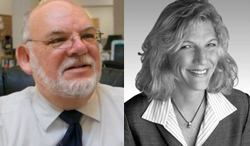 Alborado, Little |
Taking part should be Caroline Little, president and CEO of the Newspaper Assn. of America; NAA chair Robert Nutting of the Ogden Newspapers, Wheeling, West Va.; Sonny Albarado of the Arkansas Democrat-Gazette, president of the Society of Professional Journalists, and SPJ executive director Joe Skeel.
Newspaper ad revenues have plummeted from $49.2 billion in 2006 to $22.3B in 2012. This includes online ads totaling $3.3B. The $27B decline represents a lot of newsroom jobs.


 AB InBev has hired Donna Lorenson as chief communications officer and elevated the PR function to the senior leadership structure in the aftermath of the Bud Light marketing disaster.
AB InBev has hired Donna Lorenson as chief communications officer and elevated the PR function to the senior leadership structure in the aftermath of the Bud Light marketing disaster.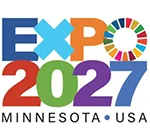 Tunheim handled the Minnesota USA World Expo bid committee, which on June 21 congratulated Serbia for landing the 2027 event.
Tunheim handled the Minnesota USA World Expo bid committee, which on June 21 congratulated Serbia for landing the 2027 event. United Minds, management consultancy, has launched Myriant, a business resiliency offering to help clients deal with the challenges during this era of misinformation, polarization and geopolitical upheaval.
United Minds, management consultancy, has launched Myriant, a business resiliency offering to help clients deal with the challenges during this era of misinformation, polarization and geopolitical upheaval.  ImageShield, which guards against online image abuse, is looking for a communications pro to handle its PR and marketing campaigns.
ImageShield, which guards against online image abuse, is looking for a communications pro to handle its PR and marketing campaigns.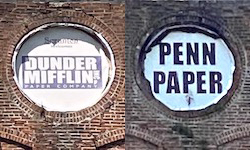 Who knew that there is a real paper company, Pennsylvania Paper & Supply, inside the iconic building seen at the opening of every episode of “The Office?”
Who knew that there is a real paper company, Pennsylvania Paper & Supply, inside the iconic building seen at the opening of every episode of “The Office?” 


 Have a comment? Send it to
Have a comment? Send it to 
No comments have been submitted for this story yet.